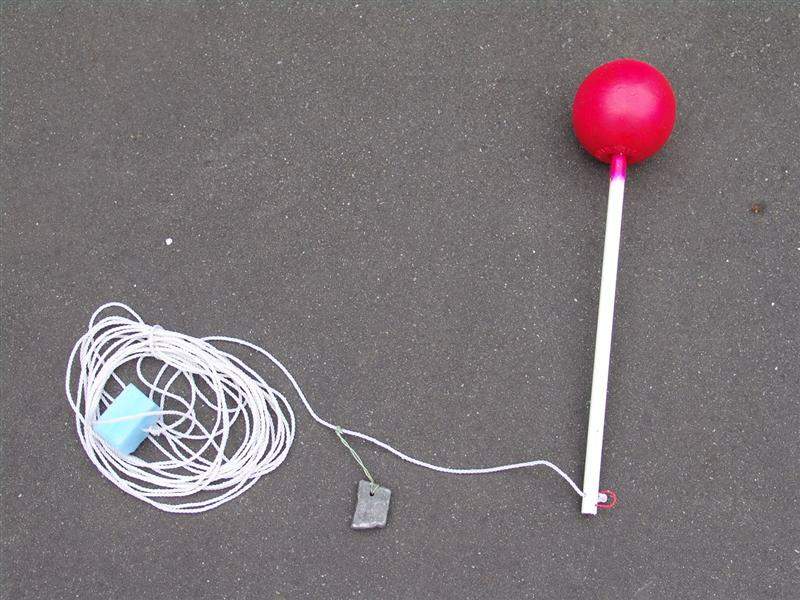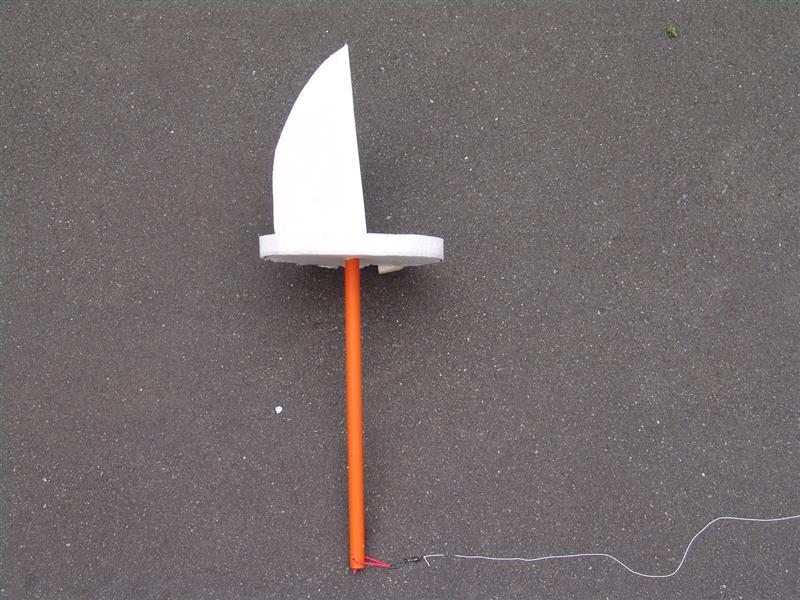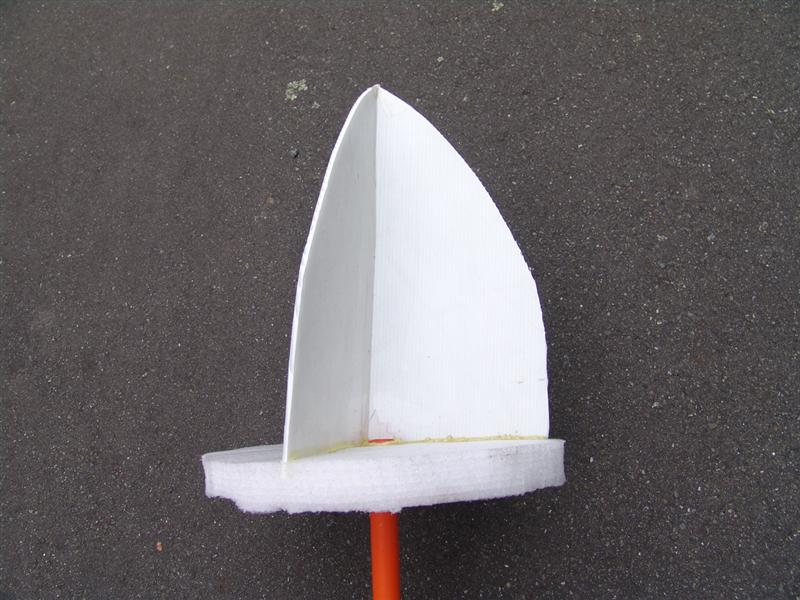THE FOOTY INTERNET COURSE
Ian N. Hull-Brown
Introduction
The FOOTY internet course was conceived by members of the R/C Sailing internet forum who were interested in the development of the Footy Class of radio yacht. The concept was, a universal course that could be constructed and sailed anywhere in the world with the results posted on the internet for international comparison without the expense of travel.
Concept and Development
A physical course length of 50 feet (15.2 metres) was chosen as the most manageable size. The sailed length was then set as five laps of the course making a total straight line length of 500 feet sailed. Times set will vary between 6-12 minutes.
The course consists of a windward buoy, anchored in position, physically connected to a leeward buoy which is free to swing directly downwind, thereby ensuring a true windward/leeward course at all times. Early versions of the course had the length cordage floating on the surface, which meant yachts were forced to tack up one side and run down the other. The floating cordage seemed to attract other non competitors sailing in the vicinity with the resulting tangle causing disruption for all. Later versions have the length cordage at a suitable depth below the surface to allow clearance for all model yachts in the area. I will illustrate and describe one version of the “internet course”. Once the concept is understood, the imagination and creativity of modellers around the world will ensure that many different ways of achieving the same result will evolve which is to be encouraged.

The Windward Buoy
The version illustrated is a simple round fishing buoy with a length of PVC plastic tube glued into the centre. At the lower end of the tube is attached a launch and retrieval line with a 500 gram weight which can be adjusted for different water depths. The course length cordage is lightweight synthetic string fitted with a fishing swivel clip to allow removal for easy storage.
The Leeward Buoy
The leeward buoy shown is again constructed using PVC plastic tube which is inexpensive, easy to obtain and simple to work. This time the flotation material is packaging foam cut in a circular pattern and topped with a windage sail shape, to assist the downwind orientation of the buoy. This windage device is important in the design of your course. The size chosen should be related to your average wind strength. Obviously in light wind areas, larger is better, with the reverse also being true. Experiment, the object is to have sufficient pull on the course length cordage to maintain the specified length, without pulling the windward buoy out of position. The shape of the foam float ensures that the buoy remains upright against the pull from the cord. Overall measurement of the course can be made ashore with a suitable tape measure, prior to launching.

|

|
Advanced designs

As is the
way with a community of clever and
thoughtful modellers, some advanced designs have been conceived and
tried. The simplest and most effective of these is
illustrated. It is a leeward gate that consists of more of
that PVC piping we spoke of earlier. This time made into two
uprights topped with circular foam floats and plastic windage
shapes. These uprights are joined together by tubing with an
attachment point between them. The object of this gate is
that it can be used as a start gate for more than one Footy at a time
and may also be used as a leeward turning gate where competitors pass
between the buoys and choose to turn to either side to complete the
rounding.
However you
decide to construct your version of the
internet course, the object is the same. To build a 15.2
metre (50 feet) long sailing course on which to test your Footy
and those of your friends. Five times around, starting at the
leeward end, clockwise or anticlockwise – you choose (buoy
touches don’t matter, because that is slow), finish downwind,
time it, post it, have fun.
Ian N. Hull-Brown
January 2007